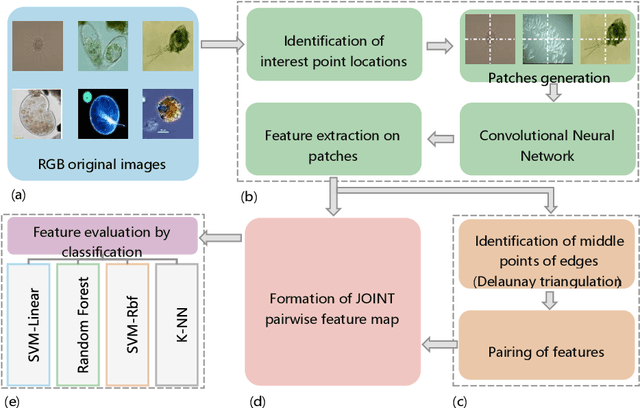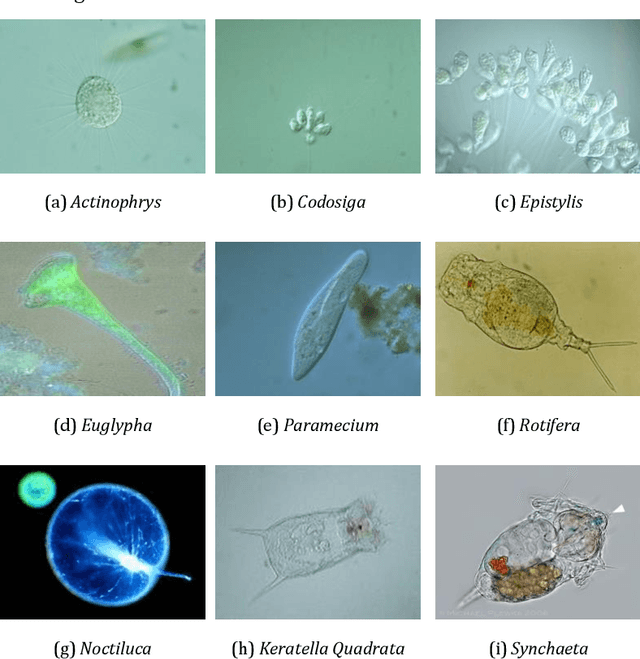A New Pairwise Deep Learning Feature For Environmental Microorganism Image Analysis
Paper and Code
Feb 24, 2021



Environmental microorganism (EM) offers a high-efficient, harmless, and low-cost solution to environmental pollution. They are used in sanitation, monitoring, and decomposition of environmental pollutants. However, this depends on the proper identification of suitable microorganisms. In order to fasten, low the cost, increase consistency and accuracy of identification, we propose the novel pairwise deep learning features to analyze microorganisms. The pairwise deep learning features technique combines the capability of handcrafted and deep learning features. In this technique we, leverage the Shi and Tomasi interest points by extracting deep learning features from patches which are centered at interest points locations. Then, to increase the number of potential features that have intermediate spatial characteristics between nearby interest points, we use Delaunay triangulation theorem and straight-line geometric theorem to pair the nearby deep learning features. The potential of pairwise features is justified on the classification of EMs using SVMs, k-NN, and Random Forest classifier. The pairwise features obtain outstanding results of 99.17%, 91.34%, 91.32%, 91.48%, and 99.56%, which are the increase of about 5.95%, 62.40%, 62.37%, 61.84%, and 3.23% in accuracy, F1-score, recall, precision, and specificity respectively, compared to non-paired deep learning features.
 Add to Chrome
Add to Chrome Add to Firefox
Add to Firefox Add to Edge
Add to Edge